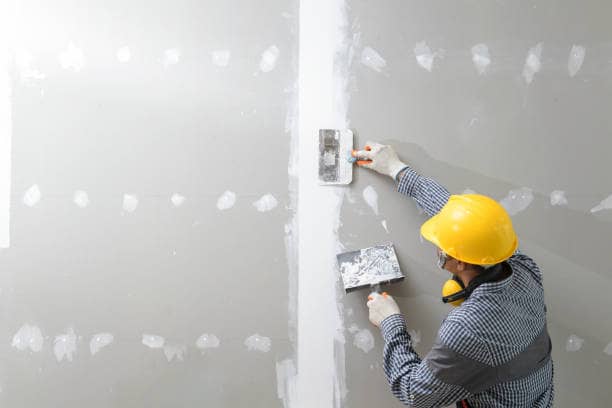Drywall, also known as gypsum board or sheetrock, is a widely used building material for creating interior walls and ceilings. To ensure a successful drywall project, it’s essential to choose the right materials. In this article, we will discuss the recommended materials for drywall projects, including the types of drywall, joint compounds, tapes, and fasteners commonly used in construction and renovation.
- Types of Drywall:
- Regular Drywall: Standard drywall is suitable for most interior applications. It comes in various thicknesses, with 1/2-inch thickness being the most common for walls and ceilings.
- Fire-Resistant Drywall: When enhanced fire resistance is needed, fire-resistant drywall with additives is used. It comes in different fire ratings, offering varying degrees of fire protection.
- Moisture-Resistant Drywall: In areas prone to moisture, such as bathrooms and kitchens, moisture-resistant drywall is essential. It has a special paper facing that resists water absorption.
- Soundproof Drywall: For noise control between rooms, soundproof drywall is a valuable option. It incorporates additional layers and sound-damping materials.
- Greenboard: Greenboard is moisture-resistant drywall primarily used in areas with high humidity, although it’s not suitable for wet areas like showers.
- Joint Compounds (Mud):
- Taping Compound: Taping compound, also known as “mud,” is used for embedding paper or fiberglass joint tape in the seams between drywall panels. It’s available in pre-mixed or powder form.
- All-Purpose Joint Compound: This versatile compound can be used for taping, finishing, and texturing. It’s suitable for both taping and topcoat applications.
- Setting Compound: Setting compounds come in different drying times (e.g., 20, 45, or 90 minutes) and are used for quickly setting tape and making initial coats.
- Lightweight Joint Compound: Lightweight mud is easier to work with and is excellent for finishing coats. It’s less likely to crack and shrink.
- Joint Tapes:
- Paper Joint Tape: Paper tape is commonly used for taping drywall seams. It adheres well to the joint compound and provides strength.
- Fiberglass Mesh Tape: Fiberglass mesh tape is self-adhesive and is an excellent choice for reinforcing corners and preventing cracks.
- Fasteners:
- Drywall Screws: Use corrosion-resistant drywall screws of appropriate length for securing drywall to studs or framing. Coarse-threaded screws are typically used for wood framing, while fine-threaded screws are for metal framing.
- Drywall Nails: In some cases, nails are used instead of screws. Nails are typically reserved for attaching drywall to wood framing.
- Corner Bead:
- Metal Corner Bead: Metal corner bead is used to protect and reinforce outside corners, providing a clean and sharp edge.
- Paper-Faced Metal Corner Bead: This type combines the strength of metal with the ease of finishing with joint compound.
- Primer and Paint:
- Drywall Primer: Before painting, it’s essential to apply a primer specifically designed for drywall to seal the surface and ensure proper paint adhesion.
- Paint: Choose a high-quality paint suitable for your intended finish. Semi-gloss and satin paints are common choices for drywall.
Conclusion
Selecting the right materials is crucial for the success of any drywall project. The choice of drywall type, joint compound, tape, fasteners, and corner bead should be based on the specific requirements of your project, including factors like fire resistance, moisture protection, and soundproofing. By using the recommended materials and following best practices, you can achieve a smooth and professional finish for your drywall installation or renovation project.
